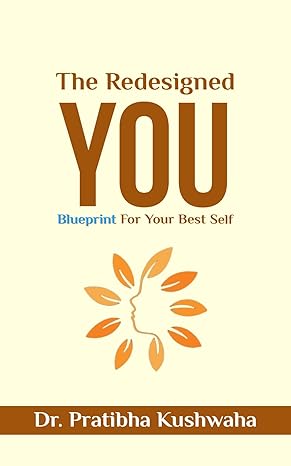In our fast-paced, hyper-connected world, finding inner peace can seem like an impossible task. Yet, nestled within the ancient text of the Bhagavad Gita, Chapter 6 offers timeless wisdom that’s surprisingly relevant to our modern lives. Known as Abhyasa Yoga, or the Yoga of Meditation, this chapter provides practical guidance for achieving mental clarity, emotional balance, and spiritual growth in today’s chaotic environment.
The Modern Relevance of Abhyasa Yoga
At its core, Abhyasa Yoga is about consistent practice and self-discipline – concepts that resonate strongly in our achievement-oriented society. But unlike the external goals we often pursue, this practice focuses on inner development. In a world where burnout, anxiety, and digital overwhelm are common, the teachings of Abhyasa Yoga offer a much-needed antidote.
Mastering the Mind in the Age of Distraction
Krishna’s words, “The mind is indeed restless, turbulent, strong, and obstinate,” seem tailor-made for our era of smartphones and social media. The constant barrage of notifications, emails, and information can leave our minds scattered and unfocused.
Abhyasa Yoga teaches us that through consistent practice and detachment, we can gain control over our restless minds. This principle aligns perfectly with modern mindfulness practices, which have gained popularity as tools for managing stress and improving focus.
Practical Application: Start with short, daily meditation sessions. Even five minutes of focused breathing can help calm the mind. Gradually increase the duration as you build your “mental muscle.”
Advanced Tip: Implement a “digital detox” day once a week. Use this time to practice extended meditation and cultivate inner silence.
Creating Sacred Space in a Busy World
The text advises practicing in “a clean place, having established a firm seat for oneself.” While we may not have access to serene mountaintops, we can create our own sacred spaces at home.
In our modern context, this could mean designating a quiet corner in your apartment for meditation, or even using noise-cancelling headphones to create a bubble of calm during your commute.
Practical Application: Identify a spot in your home that can be your meditation area. Keep it clutter-free and associate it with calm and focus. If space is limited, even a special cushion that you bring out for practice can serve as your “sacred space.”
Advanced Tip: Create a multi-sensory sacred space by incorporating elements that engage all five senses – a visual focal point, calming music or nature sounds, aromatherapy, a comfortable seat, and perhaps a soothing herbal tea to sip before or after practice.
Balancing Action and Reflection
Krishna’s teaching that action is the means for those beginning yoga, while tranquility is the means for those more advanced, offers a nuanced approach to work-life balance.
In our productivity-obsessed culture, this wisdom reminds us of the importance of both engaged action and restful reflection. It suggests that our most productive and fulfilled lives come from balancing periods of intense work with times of quiet contemplation.
Practical Application: Implement a “work-rest cycle” in your day. After periods of focused work, take short breaks for meditation or mindful breathing. This can enhance both your productivity and your sense of calm.
Advanced Tip: Practice “karma yoga” by bringing mindfulness to your daily tasks. Whether you’re answering emails or washing dishes, approach each action with full presence and attention.
Cultivating Equanimity in a Polarized World
The description of the ideal yogi as one to whom “a lump of earth, a stone, and gold are the same” may seem extreme. However, in our world of social media arguments and divisive politics, the ability to maintain emotional equilibrium is invaluable.
This teaching encourages us to develop a more balanced perspective, helping us navigate conflicts and challenges with grace and understanding.
Practical Application: Practice the “STOP” technique: Stop, Take a breath, Observe your thoughts and feelings, and Proceed mindfully. This can help you respond to triggering situations with more equanimity.
Advanced Tip: Engage in perspective-taking exercises. When faced with a conflicting viewpoint, challenge yourself to genuinely understand the other person’s perspective before responding.
Persistence in the Face of Setbacks
Krishna’s assurance that even unsuccessful attempts at yoga yield positive results offers comfort in our often perfectionist society. It reminds us that personal growth is a journey, not a destination, and that every effort counts.
This perspective can be incredibly freeing in a world where we often feel pressured to achieve immediate results in everything we do.
Practical Application: Keep a “progress journal” where you note small improvements or insights from your practice. This can help you stay motivated even when big breakthroughs seem elusive.
Advanced Tip: Cultivate a “growth mindset” by reframing challenges as opportunities for learning. When you face difficulties in your practice or life, ask yourself, “What can I learn from this?”
Holistic Approach to Success
While our society often focuses on external markers of success, Abhyasa Yoga emphasizes internal development. This holistic approach to personal growth can lead to more sustainable happiness and fulfillment.
By working on our inner selves, we become better equipped to handle the challenges and opportunities of the outer world.
Practical Application: Set both internal and external goals. For every career or fitness goal, set a corresponding inner development goal, such as cultivating patience or compassion.
Advanced Tip: Regularly assess your life balance using a “wellness wheel” that includes physical, emotional, intellectual, spiritual, social, and occupational dimensions. Identify areas that need more attention and create practices to address them.
Finding Depth in a World of Superficiality
In an era of fleeting social media interactions and surface-level connections, Abhyasa Yoga encourages us to go deeper. It invites us to explore our inner worlds and to seek a profound connection with ourselves and the universe.
This depth can provide a sense of meaning and purpose that many find lacking in modern life.
Practical Application: Regularly unplug from technology and spend time in self-reflection. Ask yourself deeper questions about your values, purpose, and the kind of person you want to be.
Advanced Tip: Engage in contemplative practices like journaling or art-making to explore your inner landscape. Allow yourself to express and examine your thoughts and feelings without judgment.
Stress Management for Modern Life
The practices outlined in Abhyasa Yoga – meditation, breath control, and mental discipline – are powerful tools for managing the high stress levels common in modern life.
Regular practice can lead to improved emotional regulation, better sleep, and enhanced overall well-being.
Practical Application: Incorporate breathing exercises into your daily routine. Simple techniques like alternate nostril breathing can be done anywhere and can quickly reduce stress levels.
Advanced Tip: Learn and practice progressive muscle relaxation or body scan meditation. These techniques can help release physical tension and promote a deep state of relaxation.
Cultivating Present-Moment Awareness
In our future-oriented society, Abhyasa Yoga’s emphasis on present-moment awareness is revolutionary. By training ourselves to fully inhabit the now, we can reduce anxiety about the future and regret about the past.
Practical Application: Practice mindfulness in everyday activities. When eating, focus fully on the tastes, textures, and smells of your food. When walking, pay attention to the sensation of your feet touching the ground.
Advanced Tip: Experiment with walking meditation or mindful movement practices like tai chi or qigong to cultivate present-moment awareness through your body.
Developing Self-Reliance and Inner Strength
Krishna’s teaching that “one should uplift oneself by one’s own self” speaks to the importance of self-reliance and inner strength. In a world where we’re often looking for external solutions, this reminds us of our innate capacity to grow and overcome challenges.
Practical Application: Start a daily self-affirmation practice. Choose a phrase that resonates with you, such as “I am capable and strong,” and repeat it to yourself, especially in challenging moments.
Advanced Tip: Engage in self-inquiry meditation, asking questions like “Who am I?” or “What is my true nature?” to deepen your understanding of yourself.
Conclusion: Ancient Wisdom, Modern Application
The teachings of Abhyasa Yoga, while thousands of years old, offer profound solutions to many of our modern challenges. In a world that often feels out of control, these practices give us tools to find inner peace, mental clarity, and emotional balance.
By incorporating these timeless principles into our daily lives – through consistent meditation, mindful action, emotional equilibrium, and persistent self-improvement – we can navigate the complexities of modern life with greater ease and fulfillment.
The invitation of Abhyasa Yoga is clear: amidst the noise and haste of our digital age, we can cultivate an inner sanctuary of calm and clarity. In doing so, we not only improve our own lives but contribute to creating a more mindful, compassionate world.
As we face the unique challenges of the 21st century, the ancient wisdom of Abhyasa Yoga reminds us that the most important journey is the one within. And in that journey, every step, every breath, every moment of practice, brings us closer to our truest, most realized selves.
In embracing these teachings, we open ourselves to a profound transformation – one that ripples out from our inner lives to touch every aspect of our existence. We become more resilient in the face of stress, more compassionate in our relationships, more focused in our work, and more connected to our deepest selves.
The beauty of Abhyasa Yoga lies in its simplicity and accessibility. It doesn’t require special equipment or a specific belief system – only a willingness to turn inward and a commitment to consistent practice. In a world that often glorifies complexity, this simplicity is refreshing and empowering.
As we continue to navigate the challenges and opportunities of our modern world, let us remember the timeless wisdom of Abhyasa Yoga. Let us embrace the power of consistent practice, the beauty of present-moment awareness, and the transformative potential of inner work.
In doing so, we may find that the ancient teachings of the Bhagavad Gita are not just relevant to our modern lives – they may be exactly what we need to thrive in the 21st century and beyond.


